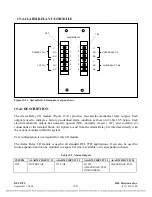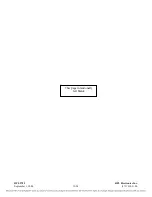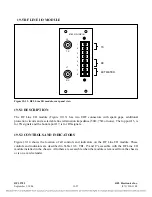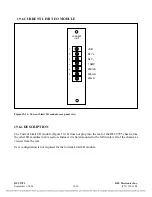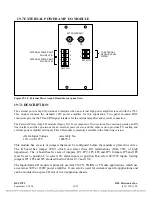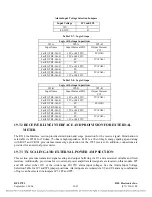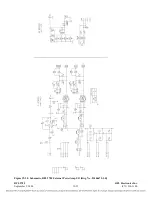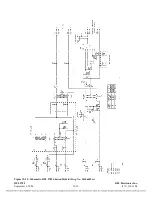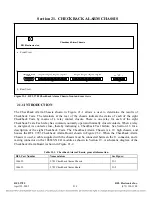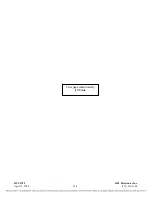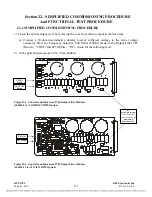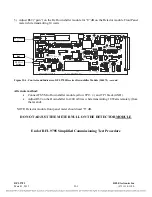
RFL 9785
RFL Electronics Inc.
September 1, 2006
19-37
(973) 334-3100
19.8.2
THEORY OF OPERATION
For this discussion, refer to the schematic diagram in Figure 19-21.
The RFL 9785 Skewed Hybrid Module uses two hybrid transformers to couple signals between a
transmitter, a receiver, and a line tuning unit. It provides impedance matching and signal separation,
and prevents mutual loading and interference. Signals can be accepted from an amplifier with a source
impedance of 50 Ohms with up to 10 Watts of output power.
The transmitted and received signal passes through a hybrid formed from transformers L1 and L2.
These transformers each have two secondaries, interconnected so that the first secondary of one
transformer is in series with the second secondary of the other. One set of interconnected secondaries
is connected to the line tuning unit through J5. This allows both the transmitter and the receiver to be
coupled to the line tuning unit. The other set of secondaries is connected across the internal balancing
network formed by resistors R3 through R6. The coarse balance potentiometer R6 and fine balance
potentiometer R4 can be adjusted to vary the resistance across the transformer secondaries, which
determines the amount of transhybrid loss.
The transmitter output is connected across the primary of L1, and the receiver input is connected
across the primary of L2. Transmitter output signals are coupled through L1 to the line tuning unit, and
incoming signals detected by the line tuning unit are coupled through L2 to the receiver. Transmitted
signals are attenuated by about 0.3 dB as they pass through the Skewed Hybrid module, and received
signals are attenuated by about 12.5 dB. Because both the received signal and its noise content are
attenuated equally, signal-to-noise ratios are unaffected.


